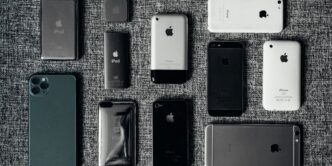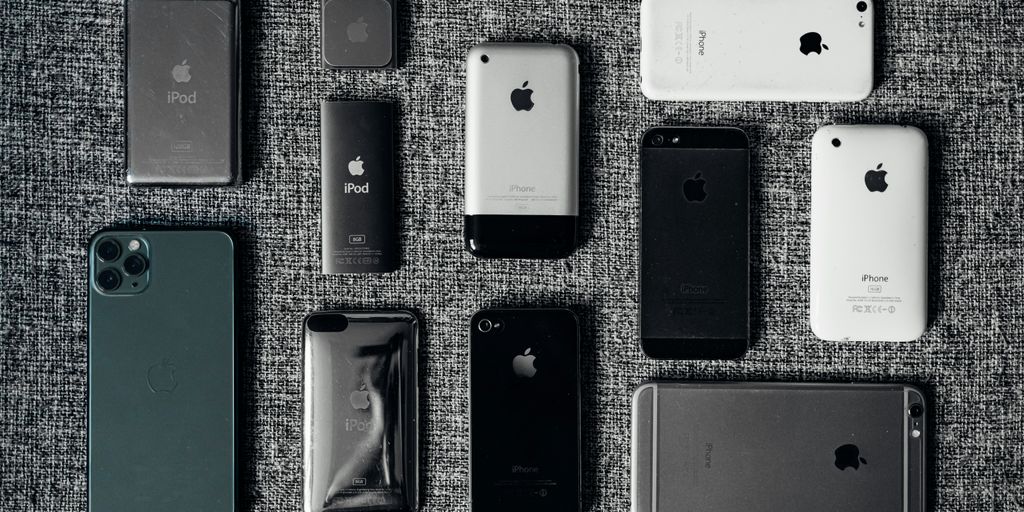It’s pretty wild to think about how far phones have come, right? I mean, back in the day, they were just for making calls. Now, you can do pretty much anything on them. This whole journey, from that first clunky mobile call to the super-smart devices we have today, is a huge story of innovation. It’s changed how we live, work, and even how economies grow. Let’s take a look at how we got here and where things might be heading next with the innovation of smartphones.
Key Takeaways
- The first mobile phone call in 1973 marked the start of a massive shift in communication, leading to billions of users worldwide.
- Technological advancements, like Moore’s Law and better cellular networks, have continuously improved phone capabilities and reach.
- Smartphones have become more than just phones; they’re now central computing platforms that blur the lines between different products.
- The widespread adoption of mobile phones has significantly boosted economic growth and provided access to services, especially in developing areas.
- Ongoing digital innovation in mobile tech continues to create new markets and opportunities, promising further economic contributions globally.
The Genesis of Mobile Communication
It’s easy to forget, looking at the sleek devices we carry today, that mobile phones started as something quite different. Back on April 3, 1973, a guy named Martin Cooper, working for Motorola, made the very first call from a mobile phone. He called another engineer, who happened to be at a rival company. Think about that for a second – the very first call was a sort of professional jab!
The First Mobile Call
That initial call was made on a prototype that was pretty clunky, weighing about 2.4 pounds. It wasn’t exactly pocket-sized, more like a brick you could hold to your ear. The battery life was also pretty sad, only giving about 30 minutes of talk time after a 10-hour charge. Still, it was a massive step. It proved that personal, portable communication was actually possible, breaking free from the wires and fixed locations of landlines.
Early Commercialization and Demand
It took a while for these devices to become something regular folks could buy. The first commercial cell phone, the Motorola DynaTAC 8000X, hit the market in 1984. It was expensive, costing around $4,000 back then, which is a lot of money even today. Because of the price, it was mostly seen as a luxury item for business people or the wealthy. But even with the high cost, there was a growing interest. People saw the potential for staying connected on the go, and that demand started to build.
Transforming Communication and Productivity
Even those early, bulky phones started changing how people worked and communicated. Imagine being able to make a business call while you were out of the office, or coordinating with someone without needing to find a payphone. This ability to communicate directly, anywhere, anytime, started to save people time and boost their efficiency. It meant less time spent traveling to make a call or waiting for someone to return to their desk. This freed-up time and energy could then be used for other things, whether it was more work, or just personal pursuits. It was the beginning of a major shift in how we interact and get things done.
Exponential Growth Fueled by Innovation
Remember when phones were just for calling? Yeah, me neither. The pace of change in mobile tech has been wild, thanks to a few big things. Think about how much faster things got once we had better cell networks and more radio frequencies available. It’s like going from a dirt road to a superhighway for data.
This growth wasn’t accidental. It was driven by smart people figuring out how to make things work better and faster. We saw improvements in cellular networks, moving from basic calls to high-speed internet right in our pockets. This expansion wasn’t just about making phones do more; it was also about making them accessible to more people, helping to bridge that gap between those who had access to technology and those who didn’t.
Here’s a look at some of the key drivers:
- Moore’s Law: While not directly about phones, the idea that computer processing power doubles roughly every two years meant phones got way smarter, way faster. This allowed for more complex apps and features.
- Spectrum Expansion: The airwaves we use for calls and data are like invisible highways. Opening up more of this spectrum meant more lanes, allowing for more devices and faster speeds.
- Network Advancements: Moving from 2G to 3G, then 4G, and now 5G has dramatically increased the speed and reliability of mobile connections. This is what makes streaming video, video calls, and using complex apps possible on the go.
It’s pretty amazing when you think about it. What started as a simple communication device has become a powerful tool that’s changed how we live, work, and connect with each other. The accessibility of these technologies has really opened up opportunities for so many people around the world.
The Smartphone Revolution and Digital Integration
It’s wild to think about how much smartphones have changed things. They’re not just phones anymore, are they? They’ve really become these all-in-one devices that do pretty much everything. This shift happened because of a few big ideas about how digital stuff works. Think about it: hardware and software are now separate. This means you can update the phone’s brain with new software without needing to swap out the physical parts. It’s like giving your phone a whole new personality just by changing its apps. Then there’s the whole idea of breaking down content into tiny digital pieces, like bits. This makes it super easy to send, store, and mix different kinds of information – text, pictures, sounds – all through the same digital pipes. This is what really kicked off the whole data revolution we’re living through now.
This new way of building things, called Layered Modular Architecture (LMA), has totally changed how products are designed. Before, a product was pretty much what it was. Now, with all these digital bits and pieces that can be mixed and matched, the idea of a product having fixed boundaries is kind of gone. Smartphones are a perfect example. They’ve blurred the lines between what a phone is and what a computer can do.
Here’s a look at how this integration happened:
- Reprogrammability: Separating hardware and software lets us change a device’s function through updates, making it adaptable.
- Content Homogenization: Turning everything into digital bits allows for easier transmission and combination across different devices and networks.
- Blurring Product Boundaries: Digital components mean devices can do more, merging functionalities that were once separate.
The smartphone is no longer just a communication device; it has evolved into a personal computing platform. This evolution has opened up so many new possibilities for how we live and work, impacting everything from how we connect with others to how we access information and services. It’s a big deal, and it all started with rethinking how digital technology is put together. The digital evolution brought about improvements in call quality, increased network capacity, and paved the way for more advanced mobile features, a trend that continues today with advancements in mobile technology.
Impact on Societal and Economic Development

It’s pretty wild when you think about how much phones have changed things, not just for us as individuals, but for entire economies. We’re talking about a real shift in how societies function and grow. The widespread adoption of mobile phones has fundamentally reshaped global economic landscapes and social interactions.
Economic Growth and GDP Impact
It’s not just about making calls anymore. The numbers show that when mobile tech spreads, economies tend to do better. Think about it: a district going from having no mobile signal to full coverage can see its GDP jump by a couple of percentage points. Seriously. Between 2000 and 2019, mobile phones actually accounted for a good chunk of the increase in income per person worldwide. It’s like giving people a tool that lets them share information and do business way more easily, which in turn makes economies stronger.
Here’s a rough idea of what that looks like:
| Metric | Estimated Impact on GDP Growth |
|---|---|
| 10% increase in mobile tech | 0.5% – 2.5% |
Empowerment in Emerging Markets
This is where things get really interesting. Mobile phones have been a game-changer in places that didn’t have much access to traditional banking or even reliable electricity. People can now do things like pay for goods using their phones, which is a huge deal when cash is hard to come by or risky to carry. Farmers, for example, can use apps to track their livestock’s health or get better prices for their crops. It’s about giving people tools they didn’t have before, letting them participate more fully in the economy.
Access to Services and Information
Beyond just business, phones are also making it easier to get important services and information. During emergencies, like natural disasters, phones are critical for sending out warnings and coordinating help. Apps can help with early warning systems and make sure people get the resources they need. Plus, with the push for things like the UN’s Sustainable Development Goals, mobile tech is seen as a major player in tackling big issues like poverty, health, and education. It’s like a direct line to progress for a lot of people.
The Evolving Landscape of Mobile Technology
It’s pretty wild to think about how far mobile tech has come, right? We went from just making calls to carrying these super-computers in our pockets. The way we connect, work, and even manage our health has totally changed because of it. And it’s not slowing down. We’re seeing new stuff pop up all the time that keeps pushing the boundaries of what’s possible.
The Role of Digital Innovation
Digital innovation is basically the engine driving all these changes. Think about it: every new app, every faster network, every smarter feature on our phones – that’s all digital innovation at work. It’s not just about making phones better; it’s about how these devices connect us to a whole world of services and information. For instance, mobile health apps are letting people check in with doctors without leaving their homes, which is a huge deal, especially for folks in rural areas. The market for these health apps is expected to keep growing, hitting hundreds of billions of dollars soon. Plus, with AI getting smarter, these apps can do even more, like predict health issues before they become serious.
Market-Creating Innovations
Sometimes, new tech doesn’t just improve something that already exists; it creates entirely new markets. Mobile money services are a perfect example. Before these services, many people, especially in developing countries, didn’t have access to banking. Now, with just a phone, they can send money, pay bills, and manage their finances. Services like M-Pesa in Kenya and bKash in Bangladesh have brought millions into the formal economy. It’s not just about banking, though. Mobile phones are also the first advanced tech many remote communities get, and people are using them to solve local problems, like improving farming practices. It’s pretty amazing how a simple device can spark so much new activity and opportunity.
Future Economic Contributions
Looking ahead, mobile technology is set to keep boosting the global economy. Experts predict it could add nearly a trillion dollars to the world economy by 2030. This growth is especially important for developing regions, where things like private 5G networks are making industries more efficient. The sheer number of people using mobile phones globally is staggering – over 5.4 billion by the end of 2022, with most of them using mobile internet. While there are still billions without internet access, mobile tech has done a lot to shrink that gap. It’s clear that as mobile technology continues to evolve, its impact on how we live and work, and on economies worldwide, will only get bigger.
The Road Ahead
So, looking back, it’s pretty wild how far phones have come. From just making calls to doing pretty much everything, it’s been a huge change. We’ve seen how these devices have connected people, boosted economies, and even helped solve real-world problems in places that needed it most. It’s not just about the tech itself, but how people use it to make things better. What’s next? Hard to say for sure, but it’s clear phones will keep changing, and we’ll probably see them do even more amazing things we can’t even imagine right now.
Frequently Asked Questions
When was the first mobile phone call made?
The very first mobile phone call was made on April 3, 1973, by Martin Cooper, an engineer. He called another engineer at a rival company. It’s amazing to think that from that one call, we now have billions of people using mobile phones today!
What makes a smartphone different from an old mobile phone?
Smartphones are like super-powered phones! They let you do much more than just make calls. You can browse the internet, use apps for games or learning, take pictures, and so much more. They’ve become like mini-computers we carry everywhere.
How have mobile phones helped people in developing countries?
Yes, mobile phones have really helped people in poorer countries. They make it easier to stay in touch, start businesses, and get information about things like farming or health. It’s like they help people leap forward.
How have smartphones changed what products are like?
Think about how many different things we use our phones for now – talking, texting, watching videos, playing games, shopping, and even learning. This has blurred the lines between what a phone is and what other devices do, like computers or cameras.
What is the economic impact of mobile phones?
Mobile technology has made a huge impact on the economy. It helps businesses work better, creates new jobs, and allows people to buy and sell things more easily. It’s like a big engine for economic growth.
What can we expect from mobile technology in the future?
The future will likely see even faster internet speeds with things like 6G. We might also see phones that do even more amazing things, perhaps helping us with health even more or connecting us in new ways we haven’t even imagined yet!














